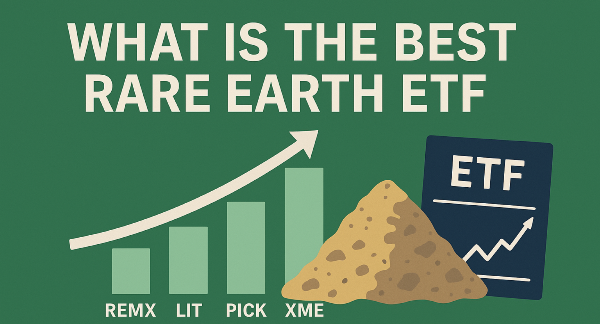Introduction
Large-cap stocks are shares of companies with market capitalizations exceeding $10 billion, often representing industry leaders with strong financial stability. These stocks play a crucial role in financial markets, attracting institutional and retail investors due to their lower volatility and consistent returns. Market capitalization serves as a key metric for categorizing stocks into large-cap, mid-cap, and small-cap classifications, influencing investment strategies and portfolio diversification. Large-cap companies are frequently included in major indices such as the S&P 500 and Nasdaq-100, reinforcing their significance in global markets.
Market Share of Large-Cap Stocks
Large-cap stocks dominate financial markets, accounting for approximately 70% of total U.S. stock market capitalization. Companies such as Microsoft and Apple contribute significantly to this share, reinforcing their influence in major indices like the S&P 500 and Nasdaq-100. Their financial strength and stability make them attractive to institutional investors, ensuring steady market performance. The prevalence of large-cap stocks highlights their role in shaping investment strategies and economic trends.
In comparison, mid-cap stocks represent around 20% of the market, offering a balance between growth potential and stability. Companies such as Nvidia and Pfizer fall into this category, demonstrating strong expansion opportunities while maintaining financial resilience. Small-cap stocks, which make up roughly 10% of the market, include firms like Plug Power, known for their high growth potential but increased volatility. Investors often diversify portfolios across these categories to optimize returns while managing risk exposure. The dominance of large-cap stocks is influenced by economic cycles, industry trends, and investor sentiment. Financial institutions such as JPMorgan Chase and Bank of America play a crucial role in maintaining market stability, while technology leaders like Amazon and Alphabet drive innovation.
Sources
TradingView
Stock Analysis
Companies MarketCap
Factors Influencing Large-Cap Market Share
Economic trends play a significant role in shaping the dominance of large-cap stocks. Market conditions, interest rate policies, and inflation levels influence investor sentiment and stock valuations. Companies such as Microsoft and Apple benefit from stable economic environments, allowing them to maintain strong financial positions. During economic downturns, large-cap stocks often outperform smaller companies due to their diversified revenue streams and established market presence.
Industry shifts and sector-specific growth patterns also impact large-cap stock market share. The rise of technology and healthcare sectors has contributed to the expansion of large-cap companies such as Nvidia and Pfizer. Financial institutions like JPMorgan Chase and Bank of America remain dominant in banking and investment services, reinforcing their market influence. As industries evolve, large-cap stocks continue to adapt.
Sources
Strike
Accounting Insights
Geneva Lunch
What Percentage of the Market is Large-Cap?
Large-cap stocks account for approximately 70% of the total U.S. stock market capitalization, reflecting their dominance in financial markets. Companies such as Microsoft and Apple are key contributors to this share, reinforcing their influence in major indices like the S&P 500 and Wilshire 5000. The Wilshire 5000 index, which tracks thousands of stocks, shows that large-cap companies represent over 91% of its total value. This significant market presence highlights the stability and financial strength of large-cap stocks, making them attractive to institutional and retail investors seeking consistent returns.
Historical trends indicate that large-cap stocks have maintained their market dominance over decades, driven by economic expansion and industry shifts. Financial institutions such as JPMorgan Chase and Bank of America have consistently held strong positions, benefiting from stable revenue streams and investor confidence. Meanwhile, technology leaders like Amazon and Alphabet continue to expand their market influence through innovation and digital transformation. Understanding these trends helps investors assess the role of large-cap stocks in portfolio diversification and long-term financial planning.
Sources
PocketSense
Investopedia
Reddit Discussion
Investment Strategies Based on Market Share
Large-cap stocks play a crucial role in portfolio allocation, offering stability and consistent returns. Investors often diversify across sectors, incorporating companies such as Microsoft and Apple to balance risk. Financial institutions like JPMorgan Chase and Bank of America provide exposure to banking and finance, while healthcare giants such as Johnson & Johnson and Pfizer offer defensive investment options. Diversifying across industries ensures resilience against market fluctuations, helping investors maintain steady portfolio performance.
Balancing risk and reward in large-cap investments requires strategic asset allocation. Growth-oriented investors may focus on technology leaders like Amazon and Alphabet, which demonstrate strong expansion potential. Meanwhile, dividend-paying stocks such as Procter & Gamble provide income stability, making them ideal for conservative investors. Large-cap funds often include a mix of growth and value stocks. Investors can further enhance portfolio performance by incorporating exchange-traded funds (ETFs) and mutual funds that track large-cap indices. Funds such as the S&P 500 ETF provide broad exposure to leading companies, reducing individual stock risk while maintaining growth potential.
Sources
Investopedia
Morningstar
BlackRock
Advantages and Challenges of Large-Cap Market Share
Large-cap stocks provide stability and financial strength, making them a reliable choice for long-term investors. Companies such as Microsoft and Apple have well-established market positions, allowing them to generate consistent revenue and withstand economic downturns. These firms often maintain strong balance sheets, ensuring lower volatility compared to mid-cap and small-cap stocks. Additionally, large-cap stocks are frequently included in major indices like the S&P 500.
Despite their stability, large-cap stocks face limitations in growth potential and market adaptability. Their mature market positions often result in slower expansion compared to smaller companies. Firms such as Johnson & Johnson and Pfizer prioritize steady earnings and dividend payouts over aggressive growth, reducing opportunities for rapid capital appreciation. Additionally, large-cap stocks are highly sensitive to macroeconomic trends, making them vulnerable to market fluctuations.
Sources
Money Smart Guides
Fincier
SmartAsset
Future Outlook for Large-Cap Stocks
Large-cap stocks are expected to maintain stability while adapting to evolving market conditions. Companies such as Microsoft and Apple continue to lead in technology, leveraging artificial intelligence and cloud computing for sustained growth. Financial institutions like JPMorgan Chase and Bank of America are integrating fintech solutions to enhance efficiency and customer engagement.
Emerging opportunities in large-cap funds are driven by advancements in technology, healthcare, and finance. Companies such as Amazon and Alphabet are expanding their AI capabilities, reinforcing their market dominance. Meanwhile, healthcare giants like Johnson & Johnson and Pfizer are focusing on biotechnology and personalized medicine, ensuring continued innovation. Despite their resilience, large-cap funds face challenges such as market concentration and economic fluctuations. The increasing dominance of a few major companies within indices like the S&P 500 raises concerns about diversification. Additionally, global economic shifts, including inflation and interest rate changes, impact large-cap stock performance.
Conclusion
Large-cap stocks continue to dominate financial markets, representing a significant portion of total market capitalization and shaping investment strategies worldwide. Their stability, financial strength, and inclusion in major indices make them attractive to both institutional and retail investors. However, limitations in growth potential and sensitivity to macroeconomic trends highlight the need for portfolio diversification. As industries evolve, large-cap stocks are integrating innovations such as artificial intelligence, biotechnology, and fintech solutions to sustain long-term expansion. Understanding their advantages, market share distribution, and future opportunities enables investors to make informed decisions that align with financial goals and market trends.
📌Read More About:
The Top Large Cap Stocks- https://stockbossup.com/pages/topics/large-cap
How Much of your Portfolio Should be a Large-Cap?- https://stockbossup.com/pages/post/38620/how-much-of-your-portfolio-should-be-a-large-cap
How Many Large-Cap Stocks Are There?- https://www.stockbossup.com/pages/post/38622/how-many-large-cap-stocks-are-there
Why Are Large Caps Outperforming?- https://stockbossup.com/pages/post/38628/why-are-large-caps-outperforming




























Introduction
Large-cap stocks are shares of companies with market capitalizations exceeding $10 billion, often representing industry leaders with strong financial stability. These stocks play a crucial role in financial markets, attracting institutional and retail investors due to their lower volatility and consistent returns. Market capitalization serves as a key metric for categorizing stocks into large-cap, mid-cap, and small-cap classifications, influencing investment strategies and portfolio diversification. Large-cap companies are frequently included in major indices such as the S&P 500 and Nasdaq-100, reinforcing their significance in global markets.
Market Share of Large-Cap Stocks
Large-cap stocks dominate financial markets, accounting for approximately 70% of total U.S. stock market capitalization. Companies such as Microsoft and Apple contribute significantly to this share, reinforcing their influence in major indices like the S&P 500 and Nasdaq-100. Their financial strength and stability make them attractive to institutional investors, ensuring steady market performance. The prevalence of large-cap stocks highlights their role in shaping investment strategies and economic trends.
In comparison, mid-cap stocks represent around 20% of the market, offering a balance between growth potential and stability. Companies such as Nvidia and Pfizer fall into this category, demonstrating strong expansion opportunities while maintaining financial resilience. Small-cap stocks, which make up roughly 10% of the market, include firms like Plug Power, known for their high growth potential but increased volatility. Investors often diversify portfolios across these categories to optimize returns while managing risk exposure. The dominance of large-cap stocks is influenced by economic cycles, industry trends, and investor sentiment. Financial institutions such as JPMorgan Chase and Bank of America play a crucial role in maintaining market stability, while technology leaders like Amazon and Alphabet drive innovation.
Sources
TradingView
Stock Analysis
Companies MarketCap
Factors Influencing Large-Cap Market Share
Economic trends play a significant role in shaping the dominance of large-cap stocks. Market conditions, interest rate policies, and inflation levels influence investor sentiment and stock valuations. Companies such as Microsoft and Apple benefit from stable economic environments, allowing them to maintain strong financial positions. During economic downturns, large-cap stocks often outperform smaller companies due to their diversified revenue streams and established market presence.
Industry shifts and sector-specific growth patterns also impact large-cap stock market share. The rise of technology and healthcare sectors has contributed to the expansion of large-cap companies such as Nvidia and Pfizer. Financial institutions like JPMorgan Chase and Bank of America remain dominant in banking and investment services, reinforcing their market influence. As industries evolve, large-cap stocks continue to adapt.
Sources
Strike Accounting Insights
Geneva Lunch
What Percentage of the Market is Large-Cap?
Large-cap stocks account for approximately 70% of the total U.S. stock market capitalization, reflecting their dominance in financial markets. Companies such as Microsoft and Apple are key contributors to this share, reinforcing their influence in major indices like the S&P 500 and Wilshire 5000. The Wilshire 5000 index, which tracks thousands of stocks, shows that large-cap companies represent over 91% of its total value. This significant market presence highlights the stability and financial strength of large-cap stocks, making them attractive to institutional and retail investors seeking consistent returns.
Historical trends indicate that large-cap stocks have maintained their market dominance over decades, driven by economic expansion and industry shifts. Financial institutions such as JPMorgan Chase and Bank of America have consistently held strong positions, benefiting from stable revenue streams and investor confidence. Meanwhile, technology leaders like Amazon and Alphabet continue to expand their market influence through innovation and digital transformation. Understanding these trends helps investors assess the role of large-cap stocks in portfolio diversification and long-term financial planning.
Sources
PocketSense
Investopedia
Reddit Discussion
Investment Strategies Based on Market Share
Large-cap stocks play a crucial role in portfolio allocation, offering stability and consistent returns. Investors often diversify across sectors, incorporating companies such as Microsoft and Apple to balance risk. Financial institutions like JPMorgan Chase and Bank of America provide exposure to banking and finance, while healthcare giants such as Johnson & Johnson and Pfizer offer defensive investment options. Diversifying across industries ensures resilience against market fluctuations, helping investors maintain steady portfolio performance.
Balancing risk and reward in large-cap investments requires strategic asset allocation. Growth-oriented investors may focus on technology leaders like Amazon and Alphabet, which demonstrate strong expansion potential. Meanwhile, dividend-paying stocks such as Procter & Gamble provide income stability, making them ideal for conservative investors. Large-cap funds often include a mix of growth and value stocks. Investors can further enhance portfolio performance by incorporating exchange-traded funds (ETFs) and mutual funds that track large-cap indices. Funds such as the S&P 500 ETF provide broad exposure to leading companies, reducing individual stock risk while maintaining growth potential.
Sources
Investopedia
Morningstar
BlackRock
Advantages and Challenges of Large-Cap Market Share
Large-cap stocks provide stability and financial strength, making them a reliable choice for long-term investors. Companies such as Microsoft and Apple have well-established market positions, allowing them to generate consistent revenue and withstand economic downturns. These firms often maintain strong balance sheets, ensuring lower volatility compared to mid-cap and small-cap stocks. Additionally, large-cap stocks are frequently included in major indices like the S&P 500.
Despite their stability, large-cap stocks face limitations in growth potential and market adaptability. Their mature market positions often result in slower expansion compared to smaller companies. Firms such as Johnson & Johnson and Pfizer prioritize steady earnings and dividend payouts over aggressive growth, reducing opportunities for rapid capital appreciation. Additionally, large-cap stocks are highly sensitive to macroeconomic trends, making them vulnerable to market fluctuations.
Sources
Money Smart Guides
Fincier
SmartAsset
Future Outlook for Large-Cap Stocks
Large-cap stocks are expected to maintain stability while adapting to evolving market conditions. Companies such as Microsoft and Apple continue to lead in technology, leveraging artificial intelligence and cloud computing for sustained growth. Financial institutions like JPMorgan Chase and Bank of America are integrating fintech solutions to enhance efficiency and customer engagement.
Emerging opportunities in large-cap funds are driven by advancements in technology, healthcare, and finance. Companies such as Amazon and Alphabet are expanding their AI capabilities, reinforcing their market dominance. Meanwhile, healthcare giants like Johnson & Johnson and Pfizer are focusing on biotechnology and personalized medicine, ensuring continued innovation. Despite their resilience, large-cap funds face challenges such as market concentration and economic fluctuations. The increasing dominance of a few major companies within indices like the S&P 500 raises concerns about diversification. Additionally, global economic shifts, including inflation and interest rate changes, impact large-cap stock performance.
Conclusion
Large-cap stocks continue to dominate financial markets, representing a significant portion of total market capitalization and shaping investment strategies worldwide. Their stability, financial strength, and inclusion in major indices make them attractive to both institutional and retail investors. However, limitations in growth potential and sensitivity to macroeconomic trends highlight the need for portfolio diversification. As industries evolve, large-cap stocks are integrating innovations such as artificial intelligence, biotechnology, and fintech solutions to sustain long-term expansion. Understanding their advantages, market share distribution, and future opportunities enables investors to make informed decisions that align with financial goals and market trends.
📌Read More About:
The Top Large Cap Stocks- https://stockbossup.com/pages/topics/large-cap
How Much of your Portfolio Should be a Large-Cap?- https://stockbossup.com/pages/post/38620/how-much-of-your-portfolio-should-be-a-large-cap
How Many Large-Cap Stocks Are There?- https://www.stockbossup.com/pages/post/38622/how-many-large-cap-stocks-are-there
Why Are Large Caps Outperforming?- https://stockbossup.com/pages/post/38628/why-are-large-caps-outperforming